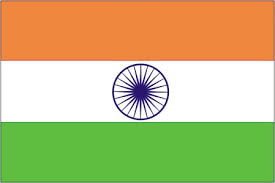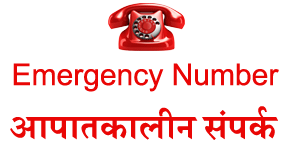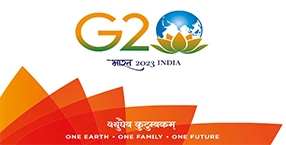In a Nutshell
India, a South Asian nation, is the seventh-largest country by area, the second-most populous country with over 1.38 billion people, and the most populous democracy in the world. India boasts of an immensely rich cultural heritage, including numerous languages, traditions, and people. The country holds its uniqueness in its diversity, and hence has adapted itself to international changes with poise and comfort. While the economy has welcomed international companies to invest in it with open arms since liberalisation in the 1990s, Indians have been prudent and proactive in adopting global approaches and skills. Indian villagers have proudly taken up farming, advanced agriculture and unique handicrafts as their profession on one hand, while the modern industries and professional services sectors are coming up in a big way on the other.
Thus, the country is attracting many global majors for strategic investments owing to the presence of a vast range of industries, investment avenues and a supportive Government. A huge population, mostly comprising the youth, is a strong driver for demand and an ample source of manpower.
Location: India lies to the north of the equator in Southern Asia.
Latitude: 8° 4' to 37° 6' north
Longitude: 68° 7' to 97° 25' east
Neighboring Countries: Pakistan and Afghanistan share political borders with India on the west, while Bangladesh and Myanmar stand adjacent on the eastern borders. The northern boundary comprises the Sinkiang province of China, Tibet, Nepal and Bhutan. Sri Lanka is another neighboring country which is separated by a narrow channel of sea formed by the Palk Strait and the Gulf of Mannar.
Capital: New Delhi
Coastline: 7,517 kms, including mainland, coastlines of Andaman and Nicobar Islands in the Bay of Bengal, and Lakshadweep Islands in the Arabian Sea.
Climate: Southern India majorly enjoys a tropical climate, but northern India experiences temperatures from sub-zero degrees to 50 degrees Celsius. Winters embrace northern India from December-February, while spring blossoms in March and April. Monsoon arrives in June and stays till September, followed by autumn in October and November.
Area: India measures 3,214 kms from north to south and 2,933 kms from east to west, with a total area of 3,287,263 sq. kms.
Natural Resources: Coal (fourth-largest reserve in the world), iron ore, manganese, mica, bauxite, rare earth elements, titanium ore, chromite, natural gas, diamonds, petroleum, limestone, arable land.
Land: 2,973,190 sq. kms
Water: 314,070 sq. kms
POLITICAL PROFILE
Political System and Government: The world's largest democracy implemented its Constitution in 1950 that provided for a parliamentary system of Government with a bicameral parliament and three independent branches: the executive, the legislature and the judiciary. The country has a federal structure with elected Governments in States.
Administrative Divisions: 28 States and 8 Union Territories.
Constitution: The Constitution of India came into force on January 26, 1950.
Executive Branch: The President of India is the Head of the State, while the Prime Minister is the Head of the Government and runs the office with the support of the Council of Ministers, who form the Cabinet.
Legislative Branch: The Federal Legislature comprises the Lok Sabha (House of the People) and the Rajya Sabha (Council of States), forming both the Houses of Parliament.
Judicial Branch: The Supreme Court of India is the apex body of the Indian legal system, followed by other High Courts and subordinate Courts.
Chief of State: President, Ms. DroupadiMurmu (since July 25, 2022)
Head of Government: Prime Minister, Mr. Narendra Modi (since May 26, 2014)
DEMOGRAPHIC PROFILE
Population: 1,380,004,385
Population Growth Rate: 0.99% (2020)
Religions: Hinduism, Islam, Christianity, Sikhism, Buddhism, Jainism
Languages: Hindi, English and at least 16 other official languages
Literacy: Total population: 77.7%
Male: 84.7%
Female: 70.3%
Suffrage: 18 years of age; universal
Life expectancy: 67.5 years (men), 69.8 years (women)
ECONOMIC PROFILE
Indian Economy
India's gross domestic product (GDP) at current prices in the first quarter of 2022-23 is estimated to be Rs. Rs. 36.85 lakh crore (US$ 447.44 billion), as against Rs. 32.46 lakh crore (US$ 394.13 billion) in 2021-22, showing a growth rate of 13.5%.
Gross value added (GVA) quarterly estimates at basic prices in the first quarter of 2022-23 at constant 2011-12 prices are as follows:
Agriculture, forestry & fishing: Rs. 493,325 crore (US$ 59.9 billion).
Mining & Quarrying: Rs. 85,423 crore (US$ 10.37 billion).
Manufacturing: Rs. 605,104 crore (US$ 73.47 billion).
Electricity, gas, water supply & other utility services: Rs. 88,640 crore (US$ 10.76 billion).
Construction: Rs. 262,918 crore (US$ 31.92 billion).
Trade, hotels, transport, communications & services related to broadcasting: Rs. 559,723 crore (US$ 67.96 billion).
Financial, real estate & professional services: Rs. 880,313 crore (US$ 106.89 billion).
Public administration, Defence& other services: Rs. 466,380 crore (US$ 56.62 billion).
Forex Reserves: US$ 528.36 billion, as of October 14, 2022.
Value of Export:India's overall exports in FY23 (April-September 2022) were estimated at US$ 382.31 billion (a 21.03% YoY increase).
Export Partners:US, Germany, UAE, China, Japan, Thailand, Indonesia and the EU. India is also tapping newer markets in Africa and Latin America.
Currency (code): Indian rupee (Rs).
Exchange Rates: Indian rupee per US$: US$ 1 = Rs. 82.36 as of October 27, 2022.
Fiscal Year: April 01 - March 31.
Cumulative FDI Equity Inflow: US$ 604.99 billion (from April 2000-June 2022).
Share of the Top Investing Countries in FDI Equity Inflow: Mauritius (26%), Singapore (23%), the US (9%), the Netherlands (7%), Japan (6%), the UK (5%), the Cayman Islands (2%), the UAE (2%), Germany (2%), and Cyprus (2%) from April 2000-June 2022.
Key Sectors Attracting the Highest FDI Equity Inflow:Services Sector (16%), Computer Software & Hardware (15%), Telecommunications (6%), Trading (6%), Automobile (6%), Construction Activities (5%), Construction Development (4%), Chemicals (3%), Drugs and Pharmaceuticals (3%), and Metallurgical Industries (3%) from April 2000-June 2022.
TRANSPORTATION IN INDIA
Airports: The Airports Authority of India (AAI) manages a total of 129 airports, which include 23 international airports, 8 customs airports, 98 domestic airports and 25 civil enclaves at Defence airfields.
International Airports: Ahmedabad, Amritsar, Bengaluru, Chennai, Goa, Guwahati, Hyderabad, Kochi, Kolkata, Mumbai, New Delhi, Thiruvananthapuram, Port Blair, Srinagar, Jaipur, Nagpur, Calicut.
Railways: The Indian railways network is spread over 126,366 kms with 12,729 locomotives being operational. There are 13,169 passenger trains run daily through 7,325 stations, plying 8.08 million travellers and 3.32 million tonnes (MT) of freight daily.
Roadways: India's road network of 6.37 million kms is the second largest in the world. With the number of passenger vehicles growing at an average annual pace of 3.6% between 2010-20, Indian roads carry about 60% of freight and 87% of passenger traffic.
Waterways: 14,500 kms.
Major Ports of Entry: Chennai, Ennore, Haldia, Jawaharlal Nehru Port Trust (JNPT), Kolkata, DeenDayal, Kochi, Mormugao, Mumbai, New Mangalore, Paradip, Tuticorin and Vishakhapatnam.















